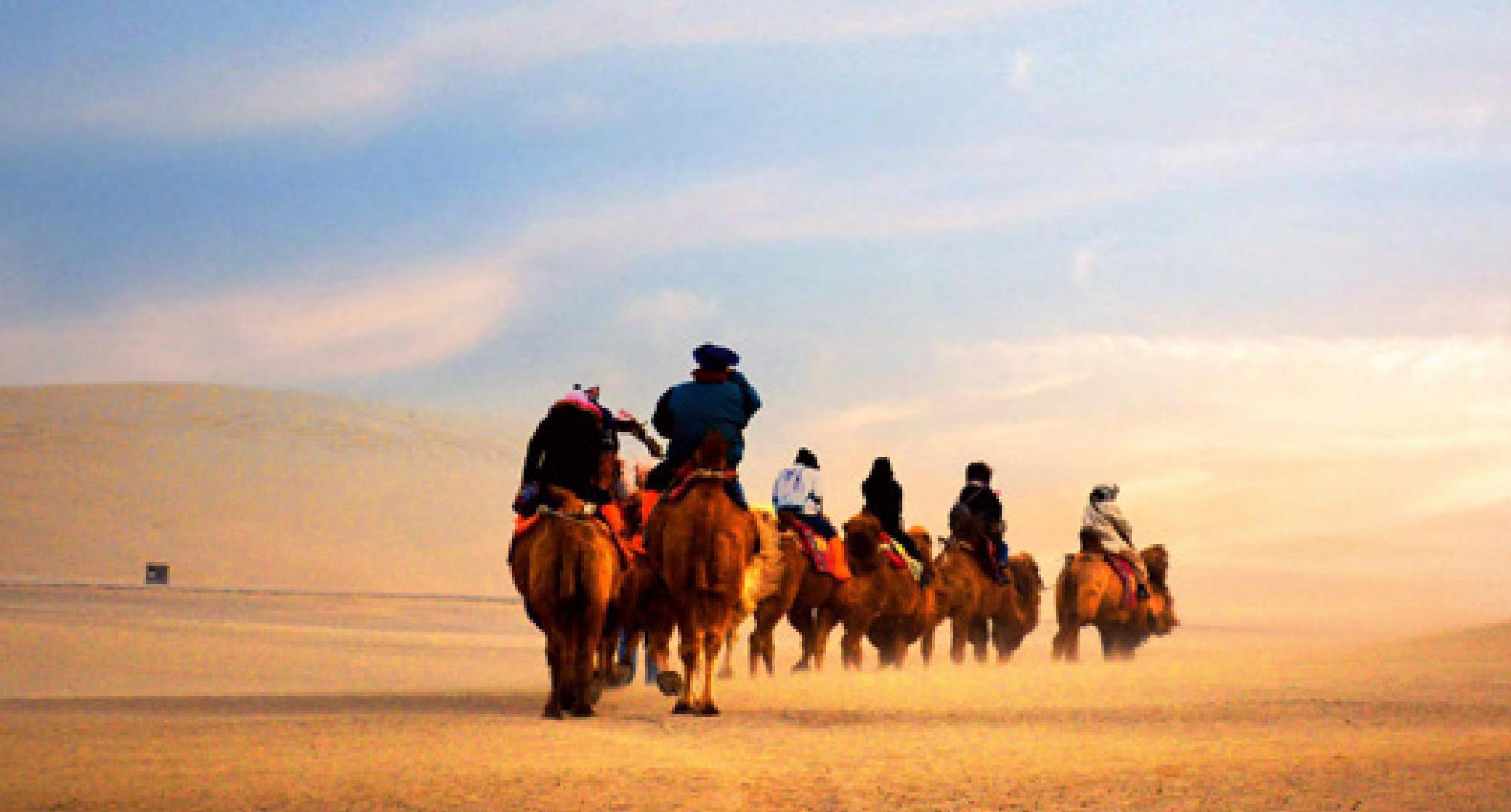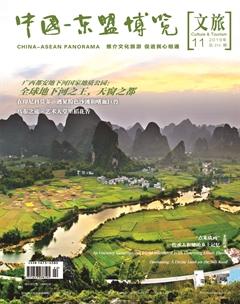Dunhuang:A Divine Land on the Silk Road
Mo Tingting



Time passes, and autumn arrives, with clear sky and crisp air. It is a good time to search for a spiritual journey in northwest China. The historical city Dunhuang, situated in the common boundary of Gansu Province, Qinghai Province and Xinjiang Uygur Autonomous Region, is a renowned tourist destination. For outdoor enthusiasts, the name “Dunhuang” has always been exotic. Therefore, many of them are looking forward to visiting the mysterious places such as Mogao Grottoes, Baima Dagoba, Mingsha Mountain and Yueya Spring.
Mogao Grottoes: A trove of Buddhist art
Carved into the cliffs along the Dachuan River, Mogao Grottoes comprise the largest, and the most richly endowed treasure house of Buddhist art in the world, being reputed as the “Caves of the Thousand Buddhas”. This great work was firstly established as a frontier garrison outpost by Emperor Wu (156 BC-87 BC) of the Western Han Dynasty (202 BC-8 AD) to protect against the Xiongnu, an ancient nationality in Asia. It also became an important gateway to the west, a center of commerce along the Silk Road, as well as a meeting place of various people and religions such as Buddhism. Later, wealthy traders and important officials were the primary donors responsible for creating new caves, as caravans made the long detour past Mogao Grottoes to pray or give thanks for a safe journey through the treacherous wastelands to the west. At its peak during the Tang Dynasty (618-907), the site housed 18 monasteries, more than 1,400 monks and nuns, and countless artists, translators and calligraphers. The caves fell into disuse for about 500 years after the collapse of the Yuan Dynasty (1271-1368) and were largely forgotten until the early 20th century, when they were rediscovered by a team of foreign explorers.
Situated at a strategic point along the Silk Road, 492 caves in Mogao Grottoes are largely on Buddhist theme, and some however are on mythical themes and portraits of patrons. For example, the No. 302 Cave of the Sui Dynasty (581-619) contains one of the oldest and the most vivid scenes of cultural exchanges along the Silk Road, depicting a camel pulling a cart which was typical of that period. The No. 23 and No. 156 Caves of the Tang Dynasty (618-907) show workers in the fields and a line of warriors, respectively. In the No. 61 Cave of the Song Dynasty (960-1279), the celebrated landscape of Wutai Mountain is an early example of artistic Chinese cartography, where nothing has been left out — mountains, rivers, cities, temples, roads and caravans are all depicted. In addition, the unique artistic style of Dunhuang art is not only the amalgamation of the Han Dynasty, but also an integration of the arts of the Turks, ancient Tibetans and other Chinese ethnic minorities. Many of these masterpieces are creations of unparalleled aesthetic talent. As evidence of the evolution of Buddhist art in the northwest region of China, Mogao Grottoes are of unmatched historical value.
After thousands of years, neither people nor time could destroy the striking beauty of Mogao Grottoes, and today not only tourists, but also followers of all religions, like many years ago, come to this famous land in search of enlightenment.
Baima Dagoba: The awe of life
Baima Dagoba (White Horse Dagoba) is located in Baima Village, Danghe Town, 1 km west of Dunhuang City. The dagoba has 9 stories and is 12 meters in height with an octagonal foundation. Structures resembling up-turned lotus petals surround its central body. On each of the angles of its hexagonal roof, there are bells which chime in a breeze. The dagoba is of the lama dagoba style of the Ming Dynasty (1368-1644).
A story accompanies the dagoba origins. Legend has it that the dagoba was built in memory of a white horse. It is said that in 384, Fu Jian, an emperor of the Former Qin Dynasty (351-394), invited Kumarajiva, a master specializing in Buddhist dharma, to carry Buddhist doctrine into China from the west region. When Kumarajiva arrived in todays Dunhuang City, his white horse got sick and died. The white horse had accompanied Kumarajiva through the Gobi, saving his life for several times. In memory of his loyal horse, Kumarajiva and local Buddhist followers raised money and had built this dagoba in 386. According to records, in 1930, a 0.9-meter-high (3.0-foot-high) pagoda with a diamond sutra (an abbreviation name for a kind of Buddhist sutra) carved on it was excavated. However, it was lost later. Even after 1,000 years, the White Horse Dagoba set off by surrounding trees and cyan tiles is still straight and majestic, being a treasure of Dunhuang City.
Mingsha Mountain: A dragon lying in Dunhuang
Piled by the sand mountain, Mingsha Mountain (Echoing-Sand Mountain) is 5 km away from the city of Dunhuang. It is named because its sands make sounds. Seen from afar, the mountain is just like a golden dragon winding its way over the horizon. The sand has many colors ranging from red to yellow, green, black and white. On days when a strong wind blows, the fast-shifting sand roars. When the wind comes as a light breeze, the sand produces gentle, dulcet sounds akin to music. Legend has it that a fierce battle was raging here when a great gust of wind came and buried all the warriors in the sand. And the soldiers continued to fight beneath the sand. Thus, it is said that the sand sound comes from the roar of the soldiers. Actually, it is the wind that shifts the sand and makes the friction.
Yueya Spring: The eye of the desert
Located approximately 6 km away from the outskirts of the city of Dunhuang and surrounded by the Mingsha Mountain, Yueya Spring (Crescent Spring) can be called a natural wonder in the Gobi Desert. Designated as a world heritage site and known as “the eye of the desert”, the lake is crescent-shaped in this oasis and surrounded by dunes. The arid region barely gets any rain each year. The lake is 218 meters long from east to west and 54 meters wide from north to south, and contains pure spring water. The site is popular with tourists who are taken on camel rides by guides to the peaks of the surrounding dunes. The lakes remarkable survival in the middle of the desert is believed to be due to its low altitude, while its position is also thought to prevent excess sand from the surrounding dunes falling into it.
Tips
Address: 25 km away from the southeast of Dunhuang, Jiuquan City, Gansu Province, China
Climate: It is dry with little rain all the year round, and day and night temperature difference is big.
Reasons to Visit: The largest existing grottoes in the world; UNESCO World Heritage Site

